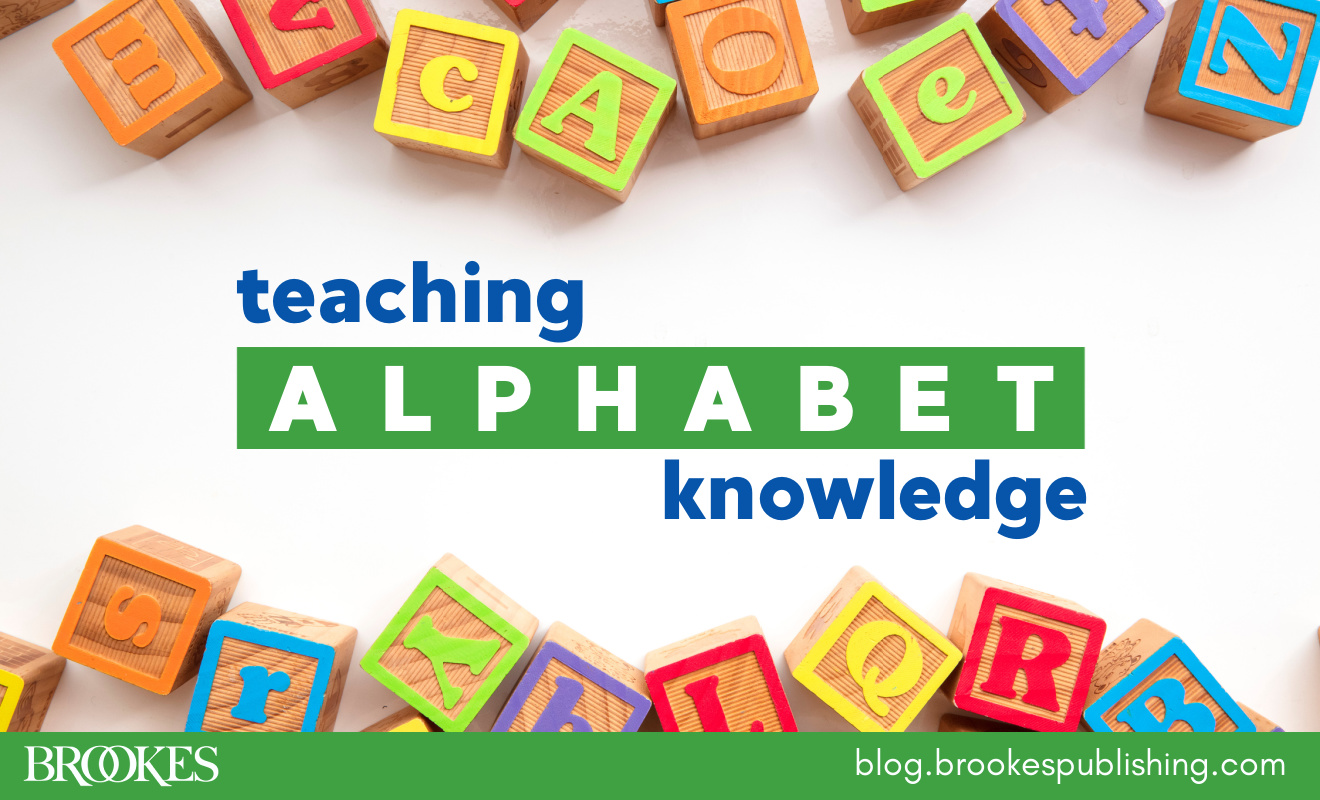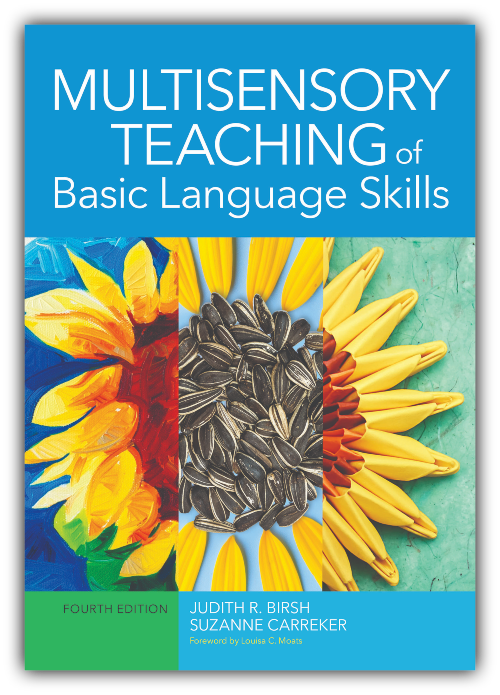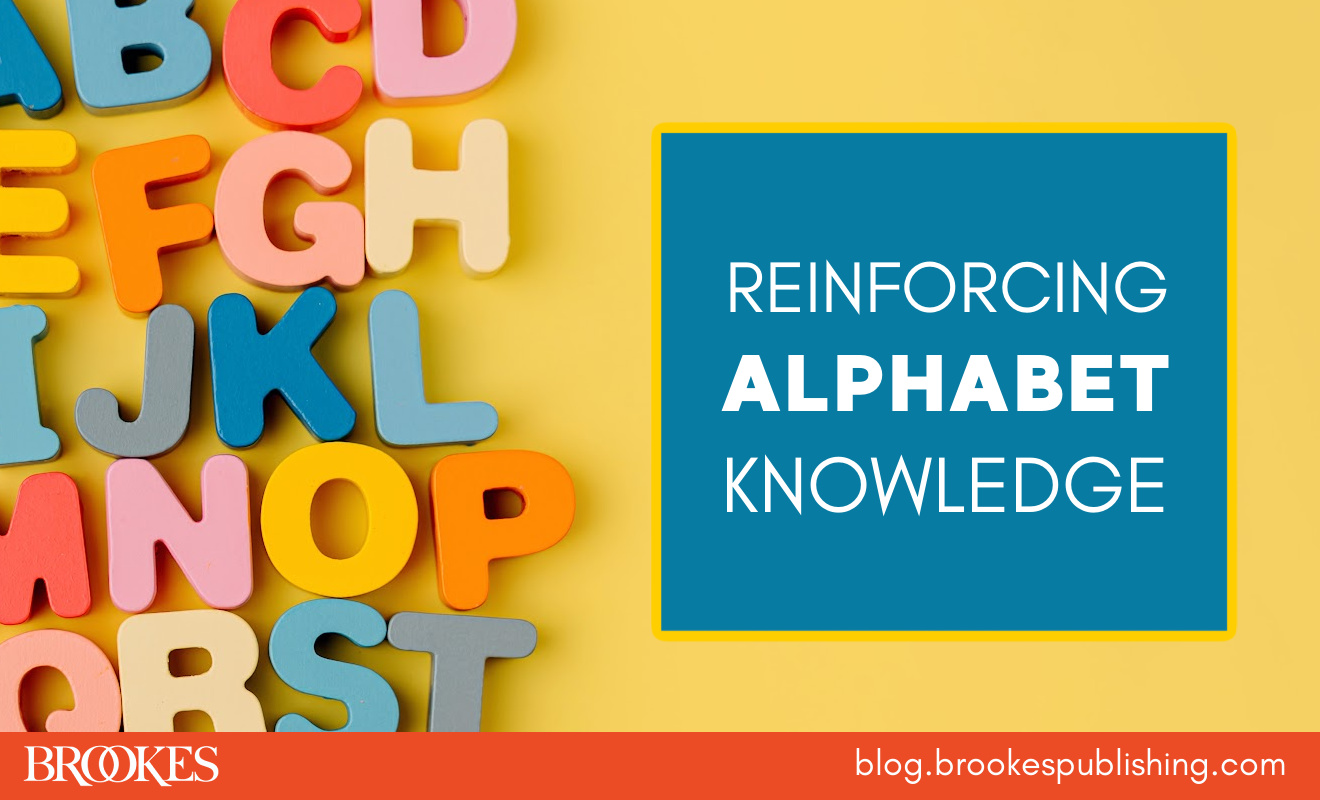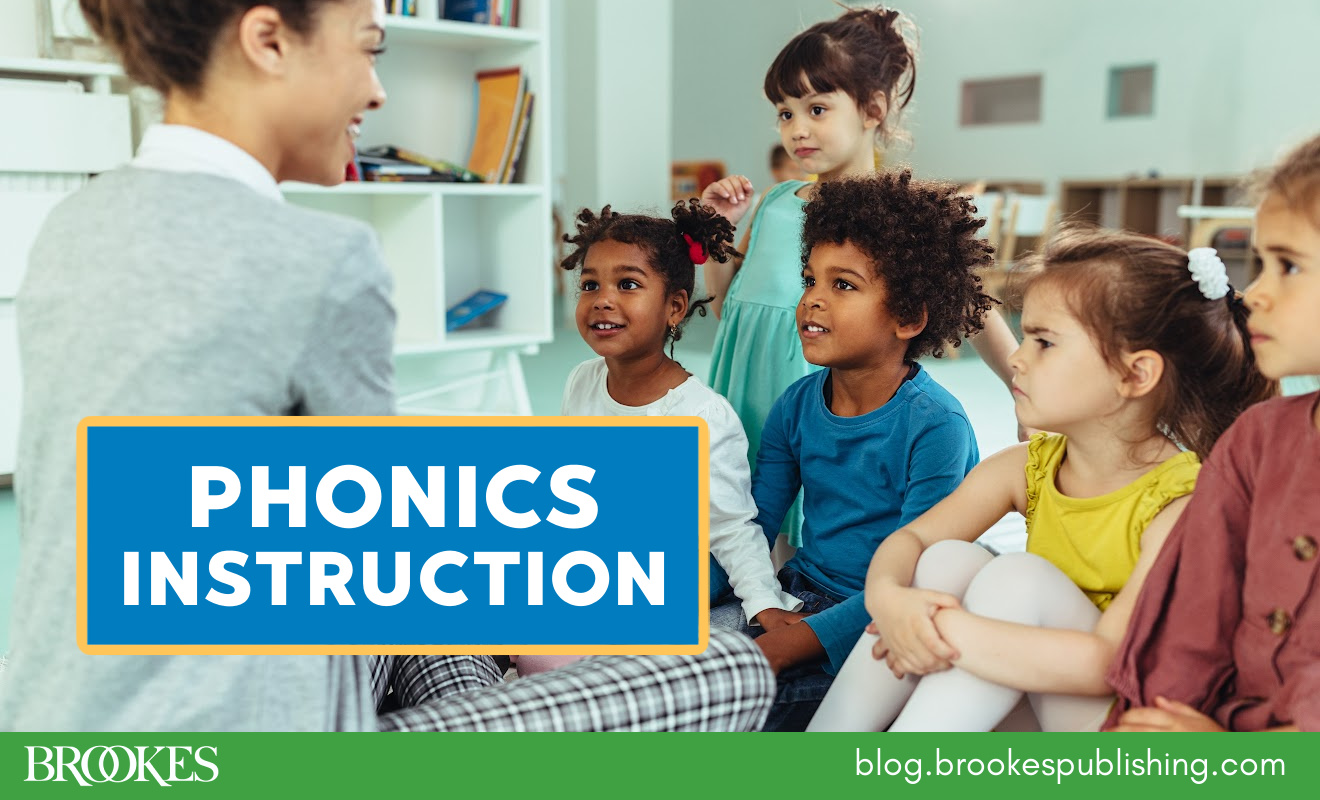7 Principles for Teaching Alphabet Knowledge
November 7, 2024
*Today’s post has been adapted from the chapter “Alphabet Knowledge” by Kay A. Allen and Graham F. Neuhaus, in Multisensory Teaching of Basic Language Skills, Fourth Edition, edited by Judith R. Birsh & Suzanne Carreker.
Complete alphabet knowledge is essential for reading success. Knowledge of letters’ shapes, names, and the phonemes they represent provides students with a solid foundation for using the alphabetic principle in learning to read. This foundation needs to be strongly formed early in a child’s academic career, because word knowledge is built on letter knowledge. Inaccurate, incomplete, or inconsistent letter knowledge jeopardizes a student’s ability to unitize letter sequences they can automatically recognize by sight.
Today’s post outlines 7 general principles to keep in mind when you’re designing instruction for developing your students’ alphabet knowledge.
Multisensory teaching. Students with reading difficulty often have trouble storing and retrieving lexical labels (including letter names) and need the opportunity to learn and practice. The purpose of multisensory teaching is to provide instruction that simultaneously engages and encodes information in different forms through at least two or three learning modalities: visual, auditory, and tactile/kinesthetic (involving muscle memory). For example, your students can say the names of letters as they see and touch 3-D plastic letters and arrange them in alphabetical order. Using multisensory instruction seems to help build visual, verbal, and tactile/kinesthetic memories associated with letters. (Refer to Multisensory Teaching of Basic Language Skills for research on why multisensory teaching is effective.)
Sequential presentation. Information must be presented in a sequence that builds logically on previously taught material. (Multisensory Teaching of Basic Language Skills includes a variety of alphabet knowledge activities that build on each other.)
Early identification and intervention. Any reading dysfunction, including slow or inaccurate letter recognition, should be identified as early as possible so that children’s reading-related difficulties can be remediated before they experience years of frustration and school failure.
Guided discovery teaching. The Socratic method leads learners to discover information through carefully guided questioning based on information they already know. For example, rather than stating that all words must contain at least one vowel sound that opens the mouth, invite students to create a word composed of only consonants, such as /k/ – /t/ for the word cat, or /d/ – /g/ for dog. This method builds interest and aids memory. Also, when you review by starting a sentence and then pausing for students to complete it, students are encouraged to participate rather than being placed on the defensive by a direct question (e.g., “The initial letter of the alphabet is ______,” rather than, “What is the initial letter of the alphabet?”).
Brief instructional segments. Frequent and brief instructional segments are more effective than less frequent segments lasting longer periods of time. Extensive guided practice is required for letter-reading automaticity, and more intense practice will be needed when a student does not easily make memories of letters and connect them to names and sounds. (See this post for 6 Fun Games for Reinforcing Alphabet Knowledge.)
Teaching to automaticity. After presenting the letters through guided discovery, you should model and provide ample practice activities, review the material on a regular basis, and assess whether your students can accurately name the letters previously taught. The rate at which students will reach letter automaticity will vary according to their ability to store, coordinate, and reconstruct the visual and verbal memories associated with each letter. Ensure success for all students by reviewing the procedure or concept before asking students to apply it. For example, a quick warm-up of touching and naming the letters on an alphabet strip is strongly encouraged before students work on sequencing or alphabetizing. This review sets up the student for success, an underlying tenet of all informed instruction.
Teaching proofreading. Guide students through the process of proofreading, by which they discover and correct their own errors instead of relying on an outside source (teacher or computer). For example, after students place the plastic letters in alphabetical order, they check their accuracy by touching and naming the letters. Although proofreading seems old-fashioned, its greatest benefit, the do-over, is current. Tell students that making mistakes is a large part of reading and writing—and when they catch their own mistakes, they get a do-over, even if the mistake is just incorrectly reading or writing a single letter.
Keep these principles at the forefront as you develop instruction that strengthens all students’ alphabet knowledge. For more specific guidance on planning instruction focused on letter recognition, letter naming, and letter sequencing, see the dedicated chapter on Alphabet Knowledge in Multisensory Teaching of Basic Language Skills, Fourth Edition.





Write a Comment
Your email address will not be published. Required fields are marked *
Post a Comment